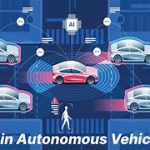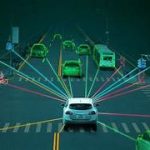AI-Driven Accident Prediction and Prevention Systems
As the world becomes increasingly connected and dependent on transportation, road safety remains a pressing concern. Despite advancements in vehicle technology and traffic management, road accidents claim over 1.3 million lives annually and leave millions more injured. The integration of Artificial Intelligence (AI) into accident prediction and prevention systems offers a transformative approach to addressing this issue. By harnessing vast amounts of data, AI can predict potential accidents, analyze risk factors, and enable proactive interventions to prevent collisions.
This article delves into the role of AI in accident prediction and prevention, its applications, benefits, challenges, and the future of safer roads driven by this technology.
The Need for AI in Accident Prediction and Prevention
The traditional methods of improving road safety—such as better infrastructure, driver education, and vehicle safety standards—while effective, have limitations. Human error, responsible for approximately 90% of road accidents, remains a critical factor. AI-driven systems aim to complement these efforts by offering real-time insights, automated responses, and predictive capabilities that can significantly reduce accidents.
AI’s ability to process and analyze large datasets, detect patterns, and learn from past incidents makes it uniquely suited to predict and prevent accidents. By integrating AI into transportation systems, vehicles, and infrastructure, stakeholders can create a comprehensive safety net.
How AI Drives Accident Prediction and Prevention
AI technologies are the foundation of modern accident prediction and prevention systems, utilizing tools like machine learning (ML), computer vision, natural language processing (NLP), and predictive analytics.
1. Real-Time Data Analysis
AI systems analyze real-time data from various sources, including:
- Vehicle Sensors: Cameras, radar, LiDAR, and GPS provide information on speed, distance, and surrounding objects.
- Traffic Management Systems: Data from traffic cameras, signals, and flow sensors help monitor road conditions.
- Weather Data: AI incorporates weather forecasts to predict conditions that could contribute to accidents, such as rain, fog, or snow.
2. Machine Learning Models
ML algorithms analyze historical accident data to identify patterns and risk factors. For example:
- Frequent accidents at a specific intersection may indicate a design flaw.
- A surge in rear-end collisions during rush hour could highlight tailgating behavior.
The models continuously learn and improve by incorporating new data, ensuring predictions remain accurate and relevant.
3. Driver Behavior Monitoring
AI-powered systems in vehicles monitor driver behavior using cameras and sensors. They can detect signs of:
- Fatigue or drowsiness through facial recognition and eye-tracking.
- Distraction, such as phone use or lack of focus on the road.
- Aggressive driving, like rapid lane changes or tailgating.
Upon detecting risky behavior, the system can issue alerts or take corrective actions, such as slowing the vehicle.
4. Collision Avoidance Systems
Advanced Driver Assistance Systems (ADAS) leverage AI to prevent collisions by:
- Automatically applying brakes when an obstacle is detected.
- Providing lane-keeping assistance to avoid drift.
- Detecting pedestrians and cyclists to prevent accidents in urban settings.
5. Predictive Analytics for Traffic Management
AI-driven predictive analytics help traffic management authorities anticipate and mitigate risks. For example:
- Predicting congestion and redirecting traffic to reduce accident-prone bottlenecks.
- Identifying high-risk areas for deploying additional safety measures like barriers or speed limits.
Applications of AI in Accident Prevention
AI-driven systems have a wide range of applications in road safety:
1. Smart Vehicles
Modern vehicles are equipped with AI-powered features, such as:
- Autonomous Emergency Braking (AEB): Detects imminent collisions and applies brakes automatically.
- Adaptive Cruise Control (ACC): Maintains safe distances from other vehicles.
- Blind Spot Detection: Alerts drivers of vehicles in their blind spots.
2. Intelligent Traffic Systems
AI optimizes traffic flow and reduces accidents through:
- Real-time monitoring of intersections.
- Dynamic traffic signal adjustments based on flow patterns.
- Early warning systems for road hazards.
3. Connected Vehicles
Vehicle-to-Everything (V2X) communication, powered by AI, allows vehicles to share information with each other and infrastructure. For instance:
- A vehicle can warn others about sudden braking ahead.
- Traffic lights can signal vehicles about upcoming red lights, reducing abrupt stops.
4. Fleet Management
AI enhances the safety of commercial fleets by:
- Monitoring driver behavior and providing training to reduce risky actions.
- Scheduling maintenance to prevent mechanical failures.
5. Urban Planning
AI tools assist city planners by analyzing accident hotspots and recommending infrastructure improvements, such as better lighting, signage, or road layout.
Benefits of AI-Driven Accident Prevention Systems
The adoption of AI in accident prediction and prevention offers numerous advantages:
1. Enhanced Road Safety
By identifying risks in real time and intervening proactively, AI reduces the likelihood of accidents, saving lives and preventing injuries.
2. Reduced Economic Costs
Accidents incur significant economic costs, including medical expenses, property damage, and lost productivity. AI-driven systems help minimize these expenses.
3. Improved Traffic Efficiency
AI optimizes traffic flow by preventing congestion and ensuring smoother travel, leading to reduced commute times and fuel consumption.
4. Personalized Driver Feedback
AI provides tailored feedback to drivers, helping them understand and improve their habits, such as avoiding distractions or maintaining safe distances.
5. Environmental Benefits
Preventing accidents and optimizing traffic flow reduces emissions, contributing to a cleaner environment.
Challenges in Implementing AI Systems
Despite their potential, AI-driven accident prevention systems face several challenges:
1. Data Privacy and Security
AI systems rely on vast amounts of data, raising concerns about the privacy and security of sensitive information, such as driver behavior and location.
2. Technological Limitations
AI’s effectiveness depends on high-quality data and robust algorithms. Inconsistent data or poorly trained models can lead to inaccurate predictions.
3. High Costs
The development and deployment of AI systems require significant investments, making them less accessible for smaller municipalities or developing regions.
4. Integration with Legacy Systems
Integrating AI with existing infrastructure and vehicles is a complex process, particularly in older systems.
5. Ethical Considerations
AI decision-making in accident prevention raises ethical questions, such as prioritizing one life over another in unavoidable collision scenarios.
The Future of AI in Accident Prevention
AI-driven accident prediction and prevention systems are poised to become integral to global transportation networks. Advancements in technology and collaborative efforts between governments, industry leaders, and researchers will drive their adoption.
1. Autonomous Vehicles
As autonomous vehicles become more prevalent, AI systems will play a central role in ensuring safety. Fully autonomous cars will rely on AI to navigate complex environments and prevent collisions.
2. Integration with Smart Cities
AI systems will integrate seamlessly with smart city infrastructure, enabling real-time communication between vehicles, traffic signals, and emergency services.
3. Enhanced AI Models
Future AI models will incorporate more diverse datasets, enabling them to predict accidents with greater accuracy and adapt to new scenarios.
4. Global Standards
The development of international standards for AI in road safety will facilitate interoperability and encourage widespread adoption.
5. Focus on Inclusivity
AI systems will be designed to accommodate diverse road users, including pedestrians, cyclists, and motorcyclists, ensuring comprehensive safety measures.
Conclusion
AI-driven accident prediction and prevention systems represent a revolutionary approach to road safety, offering the potential to significantly reduce accidents and save lives. By leveraging advanced technologies such as machine learning, real-time data analysis, and predictive analytics, these systems enable proactive interventions and smarter decision-making.
While challenges such as privacy concerns, high costs, and ethical dilemmas persist, ongoing advancements in AI and collaboration between stakeholders promise to overcome these barriers. As the transportation landscape evolves, AI will play a crucial role in creating safer, more efficient, and sustainable road networks for future generations.


